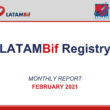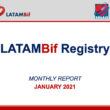Patients with acute myocardial infarction presenting lesions in multiple vessels is not associated with reduced infarct size in non-culprit lesions, even when functionally significant. Animal models suggest brief periods of ischemia in non-infarct territories (non-culprit) might protect culprit territory thanks to remote ischemic preconditioning. This pre-conditioning, according to this perspective, would reduce reperfusion injury and...
Post MI Betablockers for Good?
Patients receiving optimal medical treatment after MI do not seem to benefit from betablockers in the long term, provided they do not present cardiac failure or systolic function deterioration. This study looked into the cardio protection effect of betablockers (BB) after long term follow up in stable patients with no cardiac failure and a history...
Short Therapy and Monotherapy, Plenty of Evidence
A short dual antiplatelet therapy (DAPT) of 1 to 3 months followed by P2Y12 inhibitor monotherapy after second generation drug eluting stent (DES) implantation is safer and as effective as the traditional scheme. The idea is clear, but why hasn’t aspirin monotherapy been tested as follow up? Is aspirin old fashioned? Are there physiopathological reasons...
Diastolic Pressure Could Play a Dirty Trick on Patients Treated for Hypertension
Having too low diastolic pressure could be linked to an increase in cardiovascular events (J-shape phenomenon). However, current guidelines suggest a target blood pressure under 130/80 mmHg with no lower limit for diastolic pressure. This paper, recently published in JAMA, sought to evaluate the J-shape phenomenon of diastolic pressure in treated patients who reached a target...
MATRIX: Impact of Crossover from Radial Access to Femoral Access
The new MATRIX trial, recently published in JACC Interv., shows that an access-site crossover from radial to femoral access in patients with acute coronary syndrome cancels out the benefit provided by radial access as regards bleeding. However, there are no signs of comparative damage between successfully conducted radial or femoral access as a first attempt. ...
LATAMBif Registry: February 2021 Report
The Latin American Registry of Percutaneous Coronary Bifurcations continues to develop at a steady pace. The aim of this prospective multicenter registry is to assess the reality of percutaneous coronary bifurcation to define its needs and establish effective strategies to perfect the daily clinical practice. Bellow you will find data from February 2021, which includes...
Net Clinical Benefit of Long-Term Ticagrelor
Ticagrelor reduces ischemic risk in patients with a history of acute myocardial infarction, but it increases the risk of bleeding. Keeping a delicate balance is paramount when prescribing long-term ticagrelor to patients with a history of infarction. The PEGASUS-TIMI 54 study randomized 21,162 patients with a history of infarction on a 1:1:1 ratio: some received ticagrelor...
Ticagrelor: Yet Another Pleiotropic Effect?
Studies in animals have shown ticagrelor offers better myocardial protection against reperfusion injury after ST elevation MI than clopidogrel. This had to be tested in the clinical arena, which is the aim of this study (published in JACC Intv): to assess left ventricular remodeling after reperfusion. The study included patients undergoing their first ST elevation...
LATAMBif Registry: January 2021 Report
The Latin American Registry of Percutaneous Coronary Bifurcations continues to develop at a steady pace. The aim of this prospective multicenter registry is to assess the reality of percutaneous coronary bifurcation to define its needs and establish effective strategies to perfect the daily clinical practice. Bellow you will find data from January 2021, which includes...
The Most Read Articles of January in Interventional Cardiology
01- New Valvular Heart Disease Guidelines with Key TAVI and Mitral Regurgitation Updates Valvular heart disease management guidelines were updated last week by the AHA and the ACC. Read more HERE 02- High Risk Anatomy Challenges ISCHEMIA Outcomes According to this recent analysis published in JAHA, patients with stable Ischemic heart disease and high-risk anatomy benefit from revascularization...








